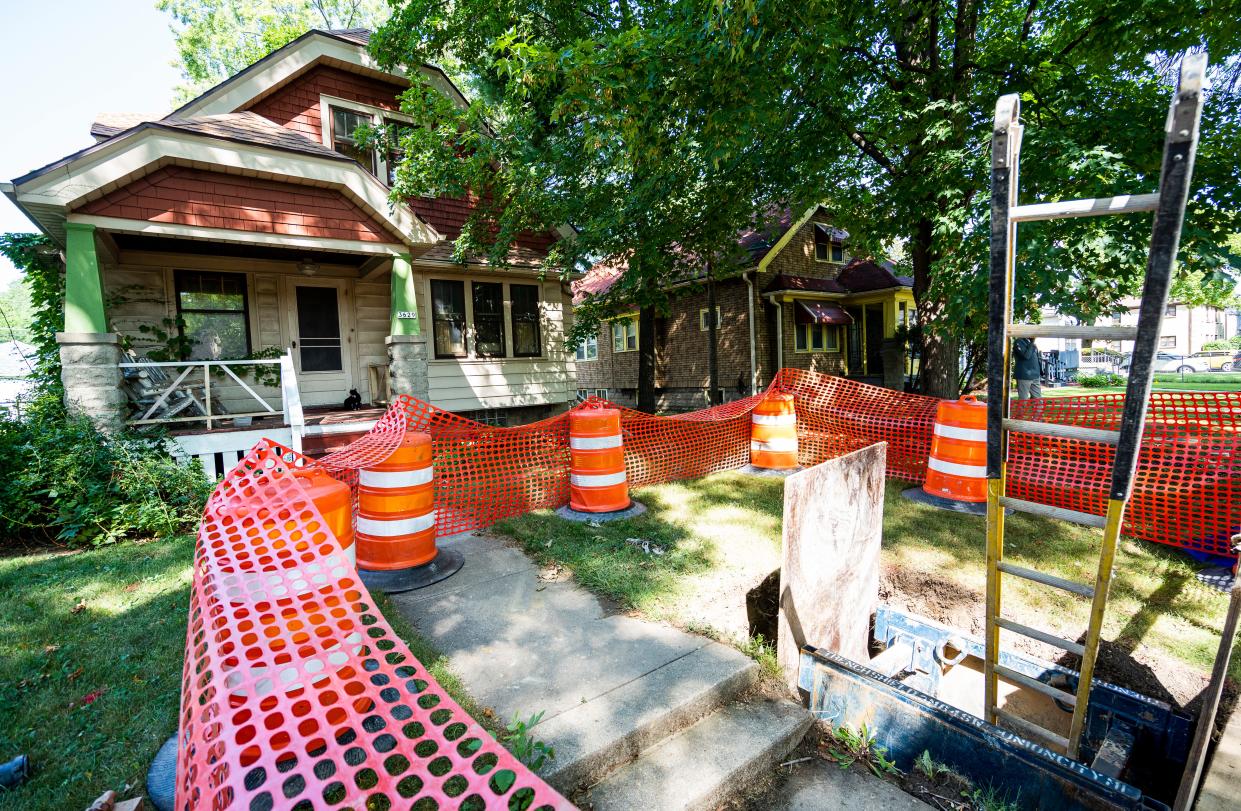Replacing all lead lines in Wisconsin could cost as much as $1 billion, not including private wells

MADISON – The total cost of replacing all of the lead pipes in Wisconsin could reach nearly $1 billion, according to cost estimates presented this week that suggest the state will have to aggressively seek funding to reach the federal government's new goal of replacing all lead lines by 2037.
To remove all of roughly 150,000 lead service lines, along with the 229,000 pipes that may have connections or solder made of lead, could range from $620 million to nearly $1 billion. That's according to Jim Ritchie of the state Department of Natural Resources in a presentation this week to the state's Natural Resources Board.
Though the state has received federal funding to offset the cost of lead pipe removal and replacement, the funding from the Bipartisan Infrastructure Bill and other revenue streams isn't going to be enough to cover the total cost for the state. Ritchie estimated that about 95,000 lines could be replaced with funding, which still leaves behind a significant number of impacted homes and residents.
"That's still a relatively small percentage unfortunately of the total numbers of lead service lines in Wisconsin," he said.
On average, Ritchie said, lead line replacement costs about $4,220 per home, but can range from $1,500 to $10,000, depending on the location, contractor and the technique used for replacement.
Wisconsin has about 150,000 lead service lines across 92 communities, according to the nonpartisan Wisconsin Policy Forum. Since 1998, more than 73,000 have already been replaced, with 37,000 of those replacements occurring since 2018.
More: New rule would require Wisconsin to replace all lead pipes by 2037
Milwaukee has the most pipes to be replaced, with about 70,000 lead lines. The city has replaced about 6,400 lead service lines since it started systematically replacing them in 2017, according to Milwaukee Water Works.
Wisconsin earlier this year received $139 million to help address water quality issues, including lead laterals. That money is being awarded to communities currently, and projects are moving forward. That funding isn't solely for lead projects — it's being used to address issues such as PFAS.
Lead poisoning can bring lifelong consequences, especially for young children. The Wisconsin Department of Health Services reported in 2018 that 9.2% of children age 5 or younger in Milwaukee have elevated blood lead levels.
Number of private wells with lead pipes unknown in Wisconsin
While the number of lead pipes attached to public water sources is a relatively solid number, the number of private wells with lead pipes or soldering is still unknown, DNR experts told members of the Natural Resources Board.
Board member Paul Buhr said he'd encountered lead pipes in his work on farms and that he hadn't heard that particular issue mentioned in any of the conversations regarding how federal funds would be spent.
"We have looked into that over the years a little bit, and we really think it's not a major issue," said Steve Elmore, the drinking water director for the DNR. "We do encourage private well owners to test their wells primarily for nitrate and bacteria, but a metal scan is also a recommendation."
Elmore said residents who are purchasing a home with a private well should ensure a metal scan has been done on the water to rule out lead, especially if the home was built before the 1960s, when lead was banned from use.
Buhr pushed back on the department experts.
"I think there should be some awareness by the public and the DNR what the actual problem is," he said. "I have found lead pipes in farming situations."
Elmore pointed out that private wells aren't regulated by the state, and the department can't simply enter properties and collect samples to test for lead.
"We have limited tools to address that problem," he said. "But I noted it and we'll do what we can to address that problem."
Douglas Cox, one of the newly appointed members of the board, asked the DNR to also ensure they're looking closely at disadvantaged communities that don't have the same resources as places like Madison and Milwaukee.
"The cost individuals have to bear to sample their own wells beyond things like bacteria, like metals, that's an expense," he said. "Very few people are getting resources to sample their own wells."
Ritchie pointed out that the federal funding is meant to specifically aid municipalities with a central water system, but other opportunities may arise.
Todd Ambs, a newly appointed board member who previously worked for the DNR and served as the deputy secretary, pointed out that Wisconsin has an uncommonly high number of private wells.
"We're the epicenter for private wells. Nationally, about 10% of households in America get their drinking water from private wells. In this state it's over 30% of the households," he said.
"If you live in a rural area, you have a private well you're not getting tested, you're likely poisoning yourself. We need to figure out how we can find a way to get some public resources to enable people with limited means to be able to test their wells."
Laura Schulte can be reached at leschulte@jrn.com and on X at @SchulteLaura.
This article originally appeared on Milwaukee Journal Sentinel: Lead line replacement might run as high as $1 billion for Wisconsin

